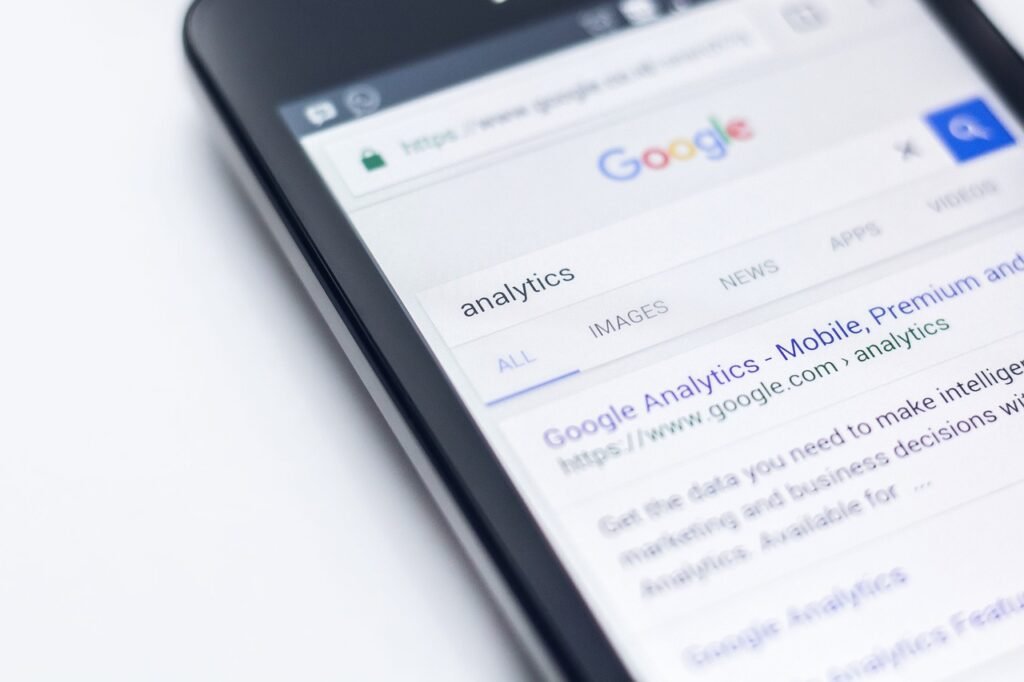In the nuanced world of influencer marketing, understanding the metrics that underline success is pivotal. These metrics, nuanced and varied, offer a compass to navigate the intricate landscape of campaigns, engagements, and ROI. In this article, we will unfold the tapestry of metrics, from engagement analytics to financial ROI, offering insights to measure, analyze, and optimize influencer marketing strategies.
In an age where data is the linchpin of decision-making, understanding and leveraging the right metrics is the cornerstone of successful influencer marketing. But what metrics should brands and influencers focus on? How are they measured, analyzed, and interpreted? Let’s journey through the complex yet fascinating world of numbers, insights, and strategic decisions.
The Importance of Metrics
Guiding the Campaigns
Metrics serve as the north star for campaigns, guiding strategy, content, engagement, and collaborations. They offer insights, not just in retrospect but in real-time, ensuring campaigns are dynamic, responsive, and optimized.
Unfolding the ROI
In the intricate dance between investments and returns, metrics offer clarity. They quantify the intangible, offering insights into the tangible impacts of narratives, engagements, and influences.
Engagement Metrics
One of the foundational aspects of influencer marketing is engagement. But how do we measure the depth, breadth, and impact of engagement? Let’s unravel the metrics that offer these insights.
Likes, Comments, and Shares
Quantifying Interactions
Likes, comments, and shares offer a quantitative measure of audience interactions. They are the initial indicators of content resonance, audience interest, and campaign effectiveness.
Analyzing Engagement Quality
While quantitative, these metrics also offer qualitative insights. Analyzing the nature of comments and shares can unveil audience sentiments, preferences, and feedback.
Audience Retention and Interaction Rate
Measuring Stickiness
Audience retention measures the ‘stickiness’ of content – how engaging content is and the audience’s duration of interaction.
Calculating Interaction Rate
The interaction rate, a ratio of total interactions to total followers, offers a more nuanced view, accounting for the influencer’s audience size to offer relative engagement insights.
Reach and Impressions
In the world of influencer marketing, breadth matters as much as depth. Here, we delve into metrics that measure how far and wide influencer content reaches.
Total Reach
Calculating Exposure
Total reach quantifies the number of unique users exposed to content. It’s a metric indicative of the breadth of content spread and influencer visibility.
Reach Segmentation
Segmenting reach by demographics offers nuanced insights, enabling brands to understand content resonance among different audience segments.
Impressions
Counting Views
Impressions measure the total views of a post or content piece. Unlike reach, it accounts for multiple views by a single user, offering insights into content visibility.
Impressions to Engagement Ratio
This ratio unveils the effectiveness of content in converting views into interactions, offering insights into content quality and engagement potency.
Conversion Metrics
Beyond engagement and reach, the ultimate testament to influencer marketing’s effectiveness lies in conversions. These metrics offer insights into the tangible actions and behaviors influenced by marketing efforts.
Click-Through Rate (CTR)
Measuring Engagement to Action Transition
CTR measures the percentage of viewers who clicked on the content/link. It provides insights into the effectiveness of content in transitioning audience engagement into tangible actions.
Optimizing for Higher CTR
Analysis of CTR enables influencers and brands to refine content, calls-to-action, and engagement strategies to enhance the conversion of views into clicks.
Conversion Rate
From Clicks to Actions
Conversion rate quantifies the percentage of users who took a desired action after clicking on a content/link. It measures the effectiveness of content and strategies in driving specific user actions, like purchases, sign-ups, or downloads.
Analyzing Conversion Paths
Understanding the user journey from engagement to conversion helps in optimizing the path, reducing friction, and enhancing user experience to boost conversions.
ROI Metrics
Return on Investment (ROI) is the ultimate measure that brands are interested in. It quantifies the financial impacts and value derived from influencer marketing campaigns.
Direct Sales and Revenue
Tracking Sales Metrics
Direct sales and revenue metrics provide insights into the tangible financial returns from influencer marketing campaigns, measuring the direct income generated from user conversions.
Attribution Models
Employing varied attribution models helps in accurately attribifying sales to specific influencer campaigns, offering insights into campaign-specific ROI.
Customer Lifetime Value (CLTV)
Measuring Long-Term Value
CLTV calculates the total revenue a brand expects to earn from a customer acquired through influencer marketing. It offers insights into the long-term financial value derived from campaigns.
Optimizing for CLTV
Understanding CLTV enables brands and influencers to focus on acquiring quality customers with high long-term value, optimizing campaign focus and strategies.
Audience Insights Metrics
Engagement and ROI are pivotal, but understanding the audience is the bedrock of effective influencer marketing. These metrics offer insights into who the audience is, their preferences, and behaviors.
Audience Demographics
Segmenting Audience
Segmenting the audience by age, location, gender, etc., offers nuanced insights, enabling content and campaign customization to resonate with specific audience segments.
Analyzing Demographic Engagement
Understanding how different demographic segments engage with content provides data to refine content strategies for enhanced resonance and engagement.
Audience Psychographics
Understanding Preferences
Psychographic metrics unveil audience interests, preferences, and behaviors. They offer qualitative insights to tailor content and engagement strategies for depth and resonance.
Customizing for Psychographics
Influencers and brands can customize content themes, narratives, and engagement approaches based on psychographic insights to foster deeper audience connections and engagements.

Related: Check out our free SEO suite

Content Effectiveness Metrics
Evaluating the effectiveness of content is fundamental in influencer marketing. These metrics offer granular insights into content performance, audience resonance, and engagement quality.
Content Engagement Index
Evaluating Interactions
The content engagement index measures the overall engagement a content piece garners. It combines likes, comments, shares, and other interactions to offer a holistic view of content performance.
Refining Content Strategy
Analyzing this index helps influencers refine their content strategy, focusing on themes, formats, and narratives that drive maximum engagement.
Content Sentiment Analysis
Gauging Audience Sentiment
Content sentiment analysis evaluates the emotions and sentiments expressed by the audience in their interactions. It offers qualitative insights into audience perception and resonance.
Enhancing Emotional Connectivity
Understanding content sentiment enables influencers to focus on creating content that fosters positive emotional connections, enhancing audience loyalty and engagement.
Brand Affinity Metrics
Brand affinity metrics measure the audience’s perception, trust, and loyalty towards the brand. It’s pivotal in evaluating the long-term impact of influencer marketing campaigns.
Brand Mention Frequency
Monitoring Mentions
Tracking how often the brand is mentioned in audience interactions, comments, and social media offers insights into brand visibility and audience perception.
Analyzing Mention Trends
Evaluating the trends and sentiments in brand mentions helps in understanding brand perception dynamics and refining strategies to enhance positive brand affinity.
Brand Loyalty Indicators
Repeat Interactions
Metrics like repeat interactions, brand endorsements, and audience testimonials offer insights into brand loyalty fostered through influencer campaigns.
Enhancing Loyalty Strategies
Analyzing these indicators helps brands and influencers to focus on strategies that amplify brand loyalty, enhancing long-term customer value and brand affinity.
Campaign Optimization Metrics
Continuous optimization is the hallmark of successful influencer marketing. These metrics offer insights and tools for dynamic campaign refinement.
A/B Testing Results
Evaluating Content Variants
A/B testing metrics evaluate the performance of different content variants, offering insights into content elements that drive optimal engagement and conversions.
Refining Content Elements
Analyzing A/B testing results helps in refining content elements like headlines, visuals, and CTAs for enhanced performance.
Iterative Analytics
Dynamic Data Insights
Iterative analytics focus on continuous data collection and analysis, offering real-time insights for dynamic campaign refinement.
Agile Campaign Adjustments
These analytics support agile adjustments, ensuring campaigns are responsive to emerging trends, audience behaviors, and performance data.
Metric Integration and Analysis
Metric integration is about weaving disparate data points into a cohesive narrative. It’s about deriving actionable insights from numbers, translating metrics into strategic decisions.
Data Integration Techniques
Combining Data Sources
Incorporating data from diverse sources like social media platforms, website analytics, and CRM systems provides a holistic view of campaign performance.
Deriving Comprehensive Insights
Integrated data ensures comprehensive insights, enabling nuanced analysis of campaign impacts on engagement, conversions, and brand affinity across touchpoints.
Analytical Tools and Technologies
Tool Selection
Choosing the right analytical tools, equipped with features for real-time data collection, integration, and analysis is pivotal.
Technology Integration
Integrating analytical technologies with marketing platforms ensures seamless data flow, analysis, and insights derivation, enhancing decision-making efficiency and accuracy.
Crafting Metric-Driven Strategies
Rooted in metrics and insights, crafting influencer marketing strategies that are dynamic, responsive, and optimized is the key to sustained success.
Insight-Based Content Creation
Content Resonance
Analyzing engagement and content effectiveness metrics to tailor content that resonates with audience preferences, behaviors, and sentiments.
Dynamic Content Adaptation
Adopting a dynamic approach, adjusting content themes, formats, and narratives in real-time based on performance data and audience feedback.
Campaign Refinement Techniques
Performance Analysis
Regularly analyzing campaign performance metrics to evaluate the effectiveness of content, engagement strategies, and influencer collaborations.
Strategic Adjustments
Making informed adjustments to campaign strategies, focusing on elements that drive optimal engagement, conversions, and ROI.
Advanced Analytical Insights
Predictive Analytics
Leveraging predictive analytics to forecast trends, audience behaviors, and campaign performance, enabling proactive strategy adjustments.
Machine Learning Algorithms
Implementing machine learning algorithms to derive deep insights, patterns, and predictions from complex data sets, enhancing decision-making accuracy and insights.
Practical Applications of Metrics
As theoretical knowledge takes a tangible form, the true mastery in leveraging metrics is revealed. In this section, we explore real-world applications and examples of effectively harnessing metrics in influencer marketing.
Case Study Analysis
Example Scenarios
Examining specific scenarios where brands and influencers successfully utilized metrics to optimize campaign performance, engagement, and ROI.
Learning from Real-World Applications
Deriving key learnings and insights from practical applications of metrics, offering readers actionable strategies and techniques.
Actionable Metric Insights
Translating Data into Actions
Offering step-by-step guides on interpreting specific metrics and translating data insights into actionable campaign adjustments and optimizations.
Continuous Learning and Adaptation
Establishing a culture of continuous learning and adaptation, leveraging metrics to keep evolving and enhancing influencer marketing strategies.
Challenges and Solutions in Metric Analysis
Every potential is paired with challenges. Here, we identify common obstacles faced in metric analysis and provide practical solutions to navigate these challenges effectively.
Data Accuracy and Reliability
Challenge Identification
Identifying common issues related to data accuracy and reliability, affecting the quality of insights and decisions.
Implementing Solutions
Offering practical solutions to enhance data accuracy, including the utilization of advanced tools, data verification techniques, and quality checks.
Data Integration Complexity
Navigating Integration
Addressing challenges related to integrating diverse data sources, formats, and platforms, hampering comprehensive metric analysis.
Technology and Techniques
Providing insights into technologies, tools, and techniques to streamline data integration, ensuring cohesive and comprehensive data analysis.
Future Trends in Metric Analysis
As we peer into the future, the evolution of metrics and analytical tools promises enhanced accuracy, insights, and strategic potentials. Let’s explore the forthcoming innovations and trends in metric analysis.
AI and Machine Learning in Metrics
Predictive Insights
Delving into the role of AI and machine learning in offering predictive insights, enabling proactive strategy formulation and campaign optimization.
Enhanced Data Processing
Exploring AI’s capability to process complex, voluminous data sets, deriving intricate insights to enhance the depth of metric analysis.
Real-Time Data Analytics
The Power of Now
Unravelling the potential of real-time data analytics in offering instant insights, enabling dynamic, on-the-fly campaign adjustments for optimized performance.
Tools and Technologies
Examining upcoming tools and technologies promising enhanced real-time data analytics capabilities, offering brands and influencers the power to optimize campaigns in real time.
Conclusion: Navigating the Metric Maze in Influencer Marketing
In the intricate tapestry of influencer marketing, metrics are the threads weaving the narratives of success. They are the silent testimonials of content resonance, audience engagement, and campaign ROI. As we step into an era marked by data-driven decisions, analytical tools, and metric mastery, the influencers and brands who navigate this landscape with insight, innovation, and integration will be the architects of influential narratives, loyal communities, and sustainable ROI.
Each campaign, post, and interaction is an opportunity to glean insights, refine strategies, and enhance influence. In this continuous journey of learning, adaptation, and evolution, metrics are the loyal companions, guiding, informing, and illuminating the path to influencer marketing success.
Read next
- Why Contract Management is Important for Your Business: in 2023 (7+ Reasons)
- Strategic Marketing: The Blueprint to Unleash Growth!
- Best Sales Outreach Tools for Your Business: Compared
- 11 Best Market Research Tools for All Your Needs: 2023 Review
- Concept of Deceptive Similarity under Indian Trademark Law






















Comments are closed.